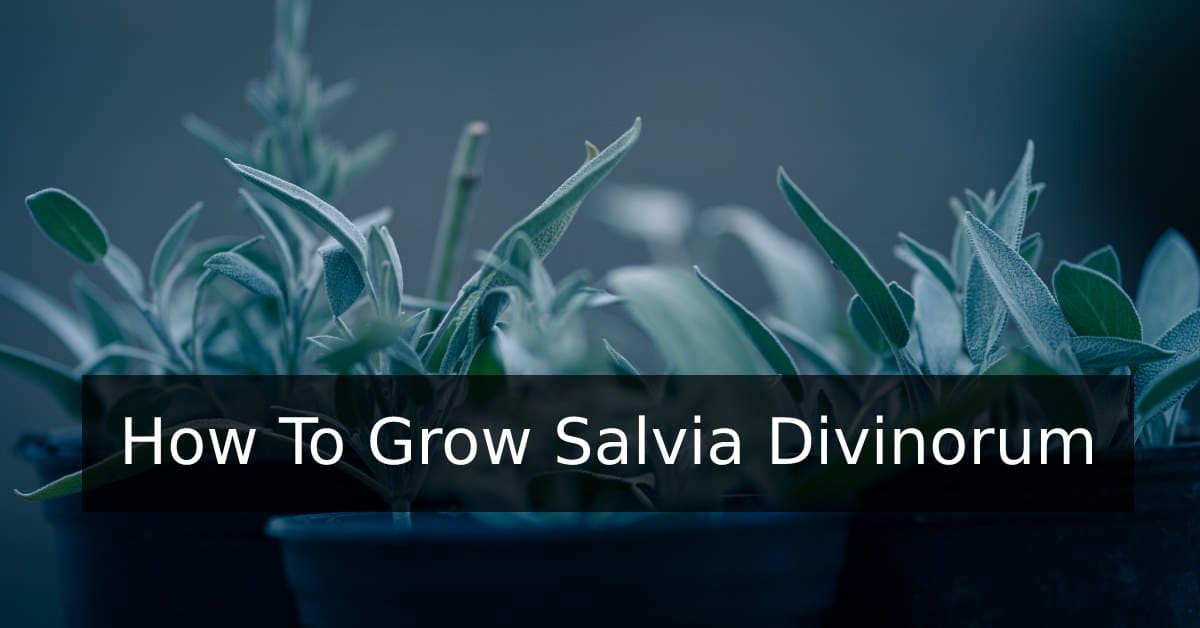Salvia Divinorum, also known as “Diviner’s Sage,” is a powerful plant with a long history of medicinal and spiritual use. In this article, we will explore the different ways to grow Salvia Divinorum, including growing from seeds, propagating from cuttings, and cultivating from rooted plants. We will also discuss the ideal conditions for growing this mystical plant, common pests and diseases to watch out for, harvesting and drying methods, as well as its various uses. We will touch on the legal considerations for growing Salvia Divinorum. Join us on this journey to discover the secrets of this fascinating plant.
Key Takeaways:
- Salvia Divinorum can be grown from seeds, cuttings, or rooted plants.
- Ideal conditions for growing include bright light, warm temperatures, well-draining soil, and regular watering.
- Common pests and diseases include aphids, spider mites, and fungal infections, but can be prevented with proper care and maintenance.
What Is Salvia Divinorum?
Salvia Divinorum is a unique and potent plant known for its psychoactive properties, belonging to the mint family.
Originating from the cloud forests of Oaxaca, Mexico, this mystical plant has been used by indigenous Mazatec shamans in traditional healing rituals for centuries. Characterized by its striking green leaves and hollow square stems, Salvia Divinorum is a fast-growing perennial that thrives in humid environments. It is primarily propagated through cuttings or seeds, requiring well-draining soil and indirect sunlight for optimal growth.
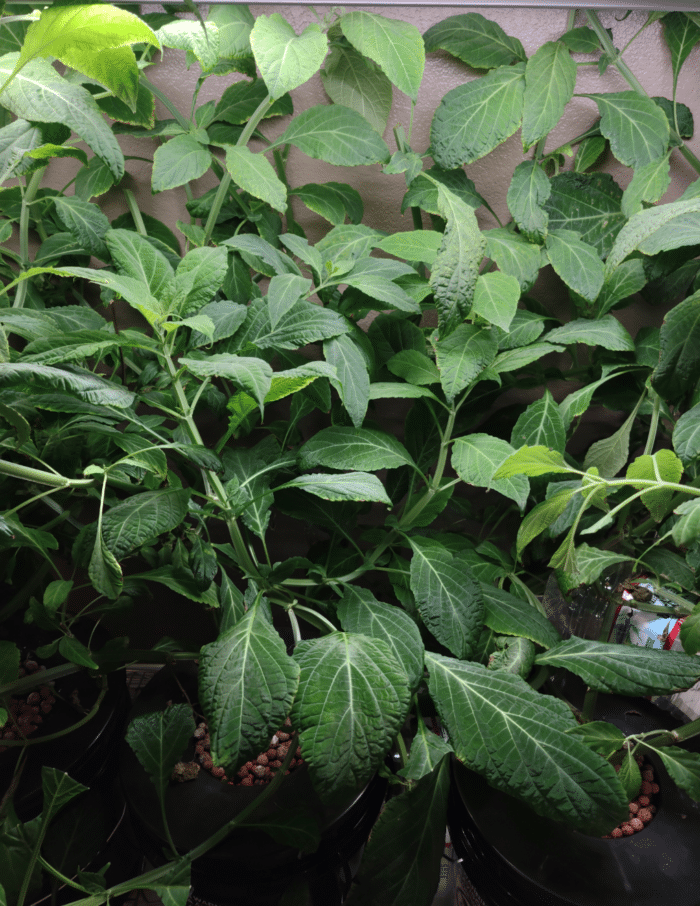
Historically, Salvia Divinorum has been revered for its mind-altering effects, attributed to the presence of powerful chemicals like salvinorin A. Its psychoactive properties have made it a subject of interest for modern research on consciousness and altered states of mind.
What Are The Different Ways To Grow Salvia Divinorum?
Growing Salvia Divinorum can be achieved through various methods, including planting seeds, propagating from cuttings, and cultivating rooted plants.
When planting seeds, it’s crucial to provide well-draining soil and maintain consistent humidity levels for optimal germination. Lightly cover the seeds and keep the soil moist but not waterlogged until they sprout.
For propagating from cuttings, choose a healthy stem with several nodes, remove the lower leaves, and place it in a glass of water until roots develop. Then, transplant it into a suitable potting mix with good drainage.
Cultivating rooted plants requires a balance of sunlight and shade, ensuring they receive indirect light to prevent scorching. Provide a rich, well-drained soil mix and regularly feed with a balanced fertilizer to support healthy growth.
Growing From Seeds
Growing Salvia Divinorum from seeds is a rewarding process that requires careful attention to soil quality, sunlight exposure, and nutrient levels.
When selecting the seeds for your Salvia Divinorum plant, opt for high-quality seeds from a reputable source to ensure successful germination. Start the germination process by planting the seeds in a well-draining soil mix rich in organic matter, such as peat moss or coconut coir. Salvia Divinorum seeds need warmth and moisture to sprout, so covering the planting tray with a clear plastic lid can help create a greenhouse effect. Once the seedlings emerge, provide them with ample sunlight, ideally 12-16 hours a day, or supplement with grow lights if growing indoors.
Propagating From Cuttings
Propagating Salvia Divinorum from cuttings offers a quicker way to establish new plants, focusing on maintaining optimal humidity levels and preventing pest infestations.
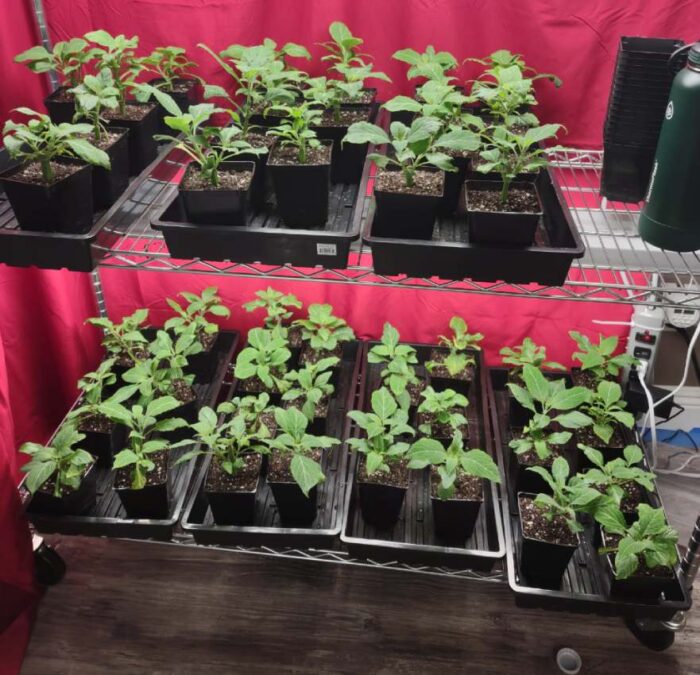
When propagating Salvia Divinorum, it’s crucial to select a healthy plant to take cuttings from and to prepare a rooting hormone solution to encourage root development. These cuttings should be placed in a well-draining soil mix and kept consistently moist without over-watering, as excessive moisture can lead to rot. Keeping the cuttings under a humidity dome or in a plastic bag can help create the ideal microclimate for root growth. Regularly misting the cuttings, but avoiding waterlogging, is essential for successful root development. It is also important to monitor the cuttings for any signs of pests such as aphids or spider mites, which can be managed with natural remedies like neem oil or insecticidal soap.
Cultivating From Rooted Plants
Cultivating Salvia Divinorum from rooted plants involves transplanting and potting established specimens while paying close attention to root development and potting techniques.
Transplanting Salvia Divinorum involves carefully uprooting the established specimens, ensuring minimal disturbance to the roots. Selecting appropriate pot sizes is crucial to accommodate root growth and prevent overcrowding. Proper potting techniques, such as using well-draining soil enriched with organic fertilizer, are essential for supporting healthy root systems. Root health should be monitored regularly, adjusting watering frequency and fertilization based on plant growth. By following these strategies, you can cultivate robust Salvia Divinorum plants that yield bountiful harvests when grown outdoors.
What Are The Ideal Conditions For Growing Salvia Divinorum?
Creating ideal conditions for growing Salvia Divinorum involves maintaining specific temperature ranges, humidity levels, and providing adequate sunlight exposure.
Salvia Divinorum thrives best in temperatures between 65-75°F with a moderate level of humidity around 50-70%.
Regarding lighting, this plant prefers 10-12 hours of light per day, but also requires some darkness for proper growth.
- It is essential to place the plant in an area with indirect sunlight or to use grow lights to simulate natural lighting conditions.
- For soil, a well-draining, slightly acidic mix enriched with organic matter is ideal.
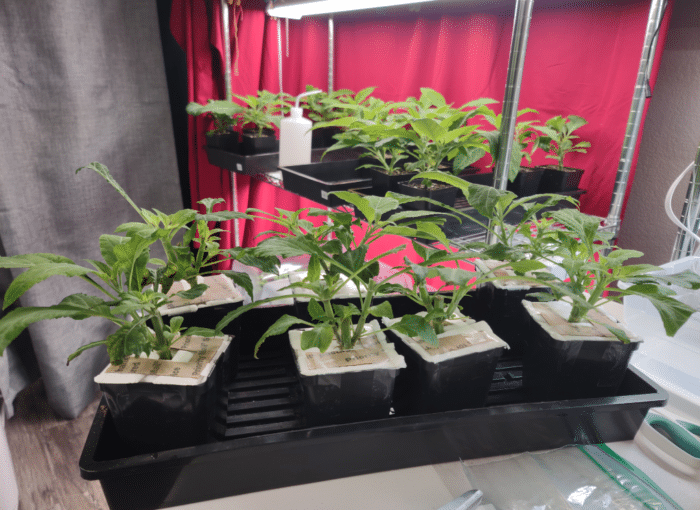
Light and Temperature
Light and temperature play crucial roles in the growth of Salvia Divinorum, with ideal conditions typically involving moderate temperatures and sufficient sunlight.
Salvia Divinorum thrives in temperatures ranging from 65 to 80 degrees Fahrenheit (18-27 degrees Celsius), providing the perfect balance for its growth. During its vegetative stage, this plant requires at least 6 hours of direct sunlight daily, while in its flowering stage, it prefers dappled light or partial shade. Temperature fluctuations outside the recommended range can impact the uptake of nutrients and lead to wilted leaves or stunted growth. Adequate potting and soil with proper drainage can help mitigate the effects of extreme temperatures on the plant’s health.
Soil and Water
Choosing the right soil composition and watering regimen is essential for the healthy growth of Salvia Divinorum, ensuring proper nutrient availability and moisture levels.
Salvia Divinorum thrives best in well-draining sandy loam or loamy soil, allowing for adequate aeration of the roots and preventing waterlogged conditions that can lead to root rot. Drainage is crucial, as stagnant water can attract pests and encourage the growth of harmful organisms.
When watering, it’s important to strike a balance between keeping the soil slightly moist but not waterlogged, as overwatering can lead to various issues including fungal diseases. To maintain this delicate balance, relying on natural methods like compost and organic fertilizers is preferable over chemical solutions to ensure long-term health and vitality of the plant.
Nutrients
Providing adequate nutrients through fertilizers is essential to support the growth and development of Salvia Divinorum, ensuring a balanced supply of essential elements for plant health.
Salvia Divinorum requires various nutrients for optimal growth, with nitrogen, phosphorus, and potassium being the primary macronutrients necessary. These nutrients can be supplied through different types of fertilizers, such as organic or chemical-based options.
Fertilizer application methods include top dressing, foliar feeding, and soil drenching, each offering unique benefits based on the plant’s growth stage and nutrient needs.
Ensuring a well-balanced nutrition regimen helps prevent common nutrient deficiencies that can hinder plant development, leading to stunted growth or yellowing of leaves.
What Are The Common Pests and Diseases That Affect Salvia Divinorum?
Salvia Divinorum is susceptible to various pests and diseases, including aphids, spider mites, and fungal infections that can impact plant health and growth.
Aphids are small insects that can be identified by their pear-shaped bodies and can cause leaves to curl, yellow, and distort growth. To prevent aphid infestations, keep the plant well-watered and consider using insecticidal soap.
Spider mites, on the other hand, are tiny arachnids that can result in stippled leaves and webbing. Regularly misting the plant and ensuring proper humidity levels can deter spider mites.
Fungal infections, such as powdery mildew or root rot, may occur due to overwatering or poor drainage. Treat fungal diseases with fungicidal sprays and ensure proper plant care practices to maintain optimal roots and potting conditions.
Aphids
Aphids are common pests that can infest Salvia Divinorum, feeding on plant sap and causing damage to leaves and stems.
Aphids are small, soft-bodied insects that come in various colors, including green, yellow, black, or brown. They reproduce quickly, making infestations challenging to manage. These pests are attracted to the nutrient-rich sap in plants, which they extract using their piercing mouthparts.
Excessive aphid feeding weakens Salvia Divinorum, causing yellowing, curling, and wilting of leaves, stunting growth, and transmitting plant diseases. To control aphids, natural methods like introducing ladybugs and lacewings, or spraying insecticidal soap can help. Chemical options like neem oil or pyrethrin-based products are also effective.
Preventing aphid infestations in Salvia Divinorum involves maintaining proper soil moisture, reducing humidity levels, and providing adequate sunlight to promote plant vigor and resilience.
Spider Mites
Spider mites are tiny arachnids that can infest Salvia Divinorum, causing stippling damage on leaves and affecting overall plant health.
These minuscule pests thrive in warm, dry conditions and are often found on the underside of leaves. Signs of spider mite infestation include webbing between leaves, yellowing or bronzing of foliage, and reduced plant vigor.
If left unchecked, spider mites can quickly multiply, leading to severe damage. When combating spider mites, it’s crucial to consider both organic and chemical control methods. Organic options like neem oil or insecticidal soap can effectively suppress spider mite populations without harming beneficial organisms or disrupting nutrient balances in the soil.
Fungal Diseases
Fungal diseases such as powdery mildew and root rot can pose significant threats to the health of Salvia Divinorum, affecting leaf quality and root stability. “
These fungal infections often manifest through visible signs such as white powdery spots on the leaves for powdery mildew or wilting and discoloration of roots for root rot. To prevent these diseases, proper care and maintenance practices are crucial, including ensuring proper air circulation and avoiding overwatering. In terms of treatment, chemical solutions like fungicides can be used, following the manufacturer’s instructions carefully. For propagation, it is recommended to use healthy cuttings from disease-free plants to prevent the spread of infections.
What Are The Harvesting and Drying Methods For Salvia Divinorum?
Harvesting and drying Salvia Divinorum leaves require careful timing and proper techniques to preserve the plant’s potency and quality for future use.
After the optimal moment for harvesting the leaves is identified, they can be carefully plucked from the plant, ensuring minimal damage to maximize the retention of essential oils and active compounds. The methods of drying can greatly impact the final product, with options ranging from traditional air-drying in a well-ventilated area to more expedited processes like heat drying using a dehydrator. Salvia Divinorum leaves need to be thoroughly dried to prevent mold growth and degradation of the valuable nutrients within. Once dried, storing the leaves in airtight containers away from light and moisture is crucial to maintain their medicinal and psychoactive properties over time.
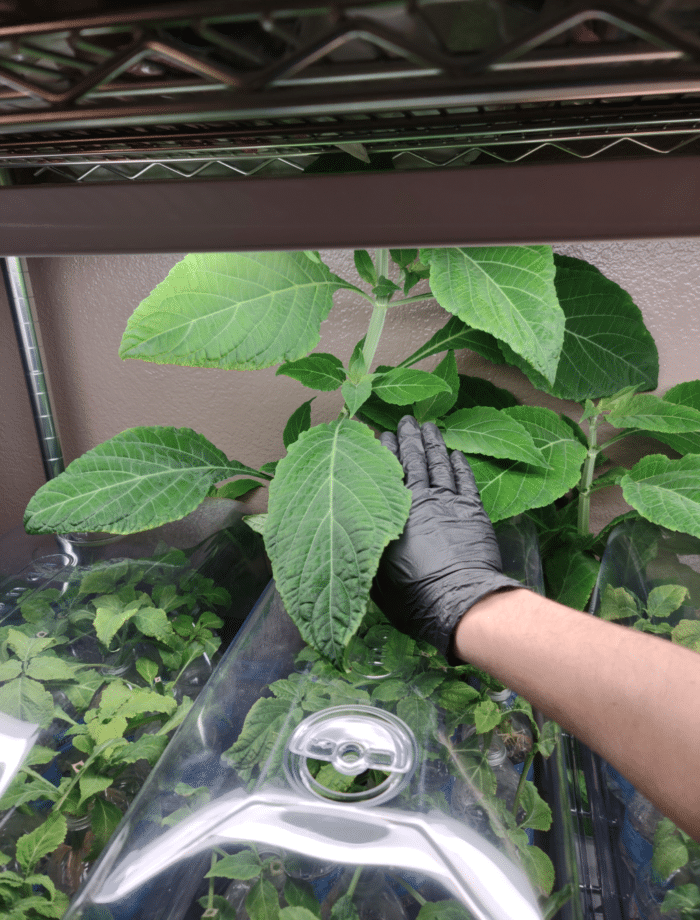
Harvesting Leaves
Harvesting Salvia Divinorum leaves at the peak of maturity ensures optimal potency and flavor, requiring careful handling and preservation techniques.
Knowing the prime time for leaf collection is crucial for maximizing the efficacy of the plant’s therapeutic properties. Typically, the best time to harvest Salvia Divinorum leaves is early in the morning when the sun has not yet evaporated the essential oils. This is when the plant’s active compounds are most concentrated.
Regarding removing the leaves, gentle plucking or cutting with sharp, sanitized scissors is recommended to prevent damage to the plant. Avoid harsh methods that could stress the plant and compromise the quality of the leaves.
Post-harvest handling is equally important to preserve the potency of the leaves. Properly drying the leaves in a well-ventilated area away from direct sunlight helps retain their essential oils and active compounds.
Drying Leaves
Drying Salvia Divinorum leaves thoroughly is essential to prevent mold growth and degradation of active compounds, requiring proper ventilation and controlled humidity levels.
One effective method for drying Salvia Divinorum leaves is air-drying. This involves spreading the leaves in a single layer on a clean, dry surface, away from direct sunlight. Ensure the area has good air circulation to aid in the drying process. Alternatively, using a dehydrator can expedite the drying process while preserving the potency of the leaves. Set the dehydrator to a low temperature, around 95°F (35°C), and monitor the leaves regularly to prevent over-drying.
After the leaves have dried adequately, it is crucial to store them properly to maintain their quality. Store the dried leaves in an airtight container, away from moisture and direct sunlight. Checking the leaves regularly for any signs of pests or mold is essential. If any pests are detected, consider using organic pesticides and ensure proper potting of the leaves to prevent infestations.
Storing Leaves
Storing dried Salvia Divinorum leaves in airtight containers in a cool, dark place preserves their potency and aroma for extended periods, ensuring long-term usability.
For optimal storage, choose containers like glass jars with tight-fitting lids or vacuum-sealed bags to protect the leaves from moisture and air exposure. Keeping the leaves away from direct sunlight or heat sources helps prevent degradation of the delicate chemicals within the leaves. Storing the containers in a pantry or cupboard maintains a consistent temperature and humidity level, further safeguarding the leaves. By following these precautions, you can extend the shelf-life of the dried leaves, ensuring they retain their potency and flavor for an extended period.
What Are The Uses of Salvia Divinorum?
Salvia Divinorum serves multiple purposes, including medicinal applications for treating certain conditions and spiritual or recreational use in cultural practices.
Medicinally, Salvia Divinorum has been studied for its potential in treating various ailments such as headaches, digestive issues, and mood disorders due to its active compounds.
In spiritual ceremonies, indigenous cultures have used Salvia Divinorum for centuries to induce visions and enhance meditation, believing it connects them to spiritual realms.
When used recreationally, Salvia Divinorum can produce intense hallucinogenic effects, prompting its classification as a psychedelic substance.
Aside from its effects, Salvia Divinorum requires specific soil conditions and regular watering for optimal growth, making it relatively low maintenance for cultivation.
Medicinal Purposes
Salvia Divinorum is utilized for its potential medicinal properties in managing conditions like pain, inflammation, and mood disorders, with ongoing research exploring its therapeutic benefits.
Salvia Divinorum contains active compounds such as salvinorin A, which plays a key role in its medicinal effects. Research has shown that this plant demonstrates potential as a natural analgesic, anti-inflammatory agent, and antidepressant. Various studies have highlighted its efficacy in treating chronic pain, anxiety, and even addiction. Regarding dosage considerations, it is crucial to exercise caution due to its potent effects, with recommended amounts varying based on individual tolerance levels and the desired therapeutic outcome.
Spiritual and Recreational Use
Salvia Divinorum holds cultural significance for its use in spiritual ceremonies and recreational experiences, providing altered states of consciousness and introspective journeys.
Often referred to as ‘Diviner’s Sage’, its seeds contain potent psychoactive compounds that interact with the brain’s receptors, leading to profound effects on perception and cognition. Traditional indigenous cultures have long utilized Salvia Divinorum in shamanic rituals to connect with the spirit world and gain insights into the mysteries of existence. The chemicals present in this plant are known to induce intense hallucinations and deep meditative states, making it a popular tool for seekers of spiritual enlightenment and seekers of recreational thrills alike.
What Are The Legal Considerations For Growing Salvia Divinorum?
Understanding the legal landscape surrounding Salvia Divinorum cultivation and use is crucial, as regulations vary across regions and countries.
Generally, the legality of Salvia Divinorum revolves around its psychoactive properties, leading to restrictions in many places.
Some areas have banned the plant altogether, while others have regulations on possession limits.
For individuals considering cultivation, it’s vital to research local laws to avoid legal consequences. Proper plant care is essential to prevent infestations and diseases that could violate regulations. Adhering to compliance requirements not only ensures legality but also promotes responsible and sustainable practices in the cultivation and distribution of Salvia Divinorum.
Frequently Asked Questions
What is Salvia Divinorum?
Salvia Divinorum is a species of sage native to Mexico and Central America. It is also known as diviner’s sage or simply salvia.
What is the best way to grow Salvia Divinorum?
The best way to grow Salvia Divinorum is through propagation from stem cuttings. This ensures that the plants retain their genetic characteristics and produce high-quality leaves.
Where should I plant Salvia Divinorum?
Salvia Divinorum thrives in moist, well-drained soil and partial shade. It is best to plant it in a location that receives morning sunlight and afternoon shade.
How often should I water Salvia Divinorum?
Salvia Divinorum prefers regular watering, but make sure not to overwater as it can lead to root rot. A good rule of thumb is to water the plant once a week, or whenever the top inch of soil is dry.
When is the best time to harvest Salvia Divinorum leaves?
The best time to harvest Salvia Divinorum leaves is when they are fully mature and have a dark green color. This is usually around 80-90 days after planting.
How should I store Salvia Divinorum leaves?
Salvia Divinorum leaves can be dried and stored in an airtight container in a cool, dry place. They can also be frozen for long-term storage. Make sure to label the container with the date and strain of the leaves.
Last Updated: 2/11/2024

